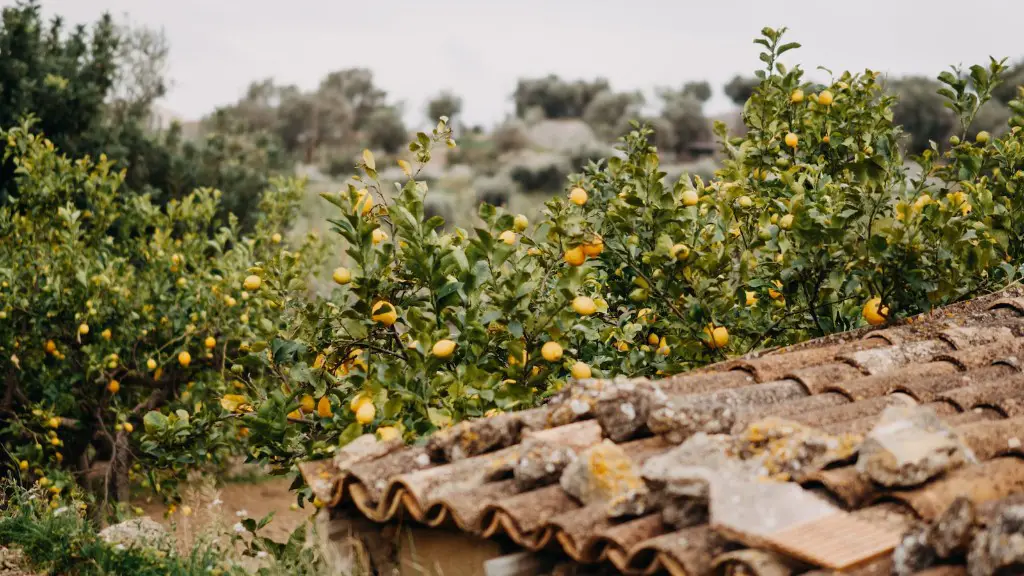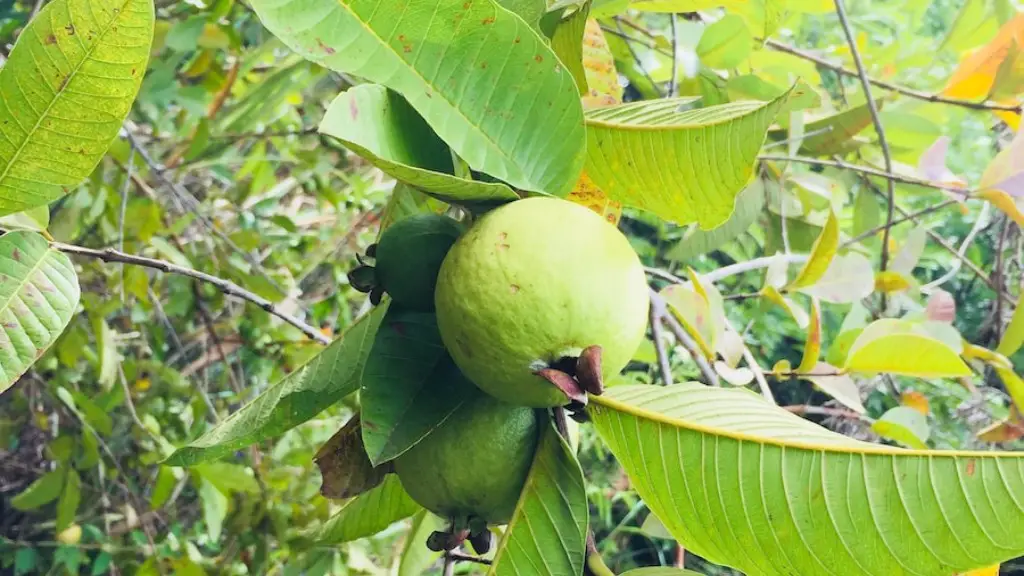Using lemon trees in your garden can be a great way to spruce up a garden. But, as with most trees, over time the leaves may start to fall off. Many gardeners wonder whether the leaves will grow back on lemon trees, especially when trying to prune the tree and make it look full and appealing. The good news is: yes, the leaves usually do grow back. Here is how.
Leaf Shape and Color
Leaves on a lemon tree will grow back in the same shape and style as all other leaves on that type of lemon tree. So, for instance, if you’re familiar with the variegated variety of lemon trees, you can expect that new leaves will be in the same variegated shape, but they may come in a slightly different color. The amount of variegation may also vary, as the shade of yellow color changes between the original and the new leaves.
Timing Of Growth
The timing of when the leaves will grow back depends on a few different factors, such as the type of tree and the health of the tree. Generally, the new leaves will start to appear in the late summer or fall, although in some cases they may not start to appear until spring.
Care and Pruning
New leaves will only appear if the tree is properly taken care of. Make sure the tree gets the correct amount of water, fertilizer, and sunlight for the species. If you prune the tree, make sure to do so carefully and properly. Removing too many leaves or branches can reduce the plant’s ability to produce new leaves.
Adding Mulch
Adding mulch around the lemon tree can help promote the growth of new leaves. Mulch helps retain moisture in the soil, so the tree will not have to struggle to draw up moisture. It also helps to prevent weeds from competing with the lemon tree for nutrients.
Fertilizing
Regular fertilizing can also encourage new leaf growth. Use a fertilizer designed for citrus trees and follow the instructions carefully. Be careful not to over-fertilize, because this can damage the lemon tree and inhibit new leaf growth.
Watering
In order for new leaves to appear, you must make sure to water the lemon tree sufficiently. Lack of water can also lead to leaf drop. It’s important to water the lemon tree enough to keep the soil damp but not waterlogged. If the soil is soggy, excess water can drown the roots and prevent new leaves from appearing.
Preventing Disease and Pests
Disease and pests can both create problems for a lemon tree and prevent new leaf growth. Make sure to inspect the tree regularly for any signs of disease such as brown spots, discoloration, wilting, or other signs of distress. You can also check for insects and bugs by shaking the tree and seeing if anything falls off. If you do spot any diseases or pests, it’s important to treat the tree immediately with a suitable product to avoid any further damage.
Sufficient Sunlight
Lemon trees require plenty of sunlight in order to produce new leaves. If the tree is not receiving enough sunlight, the leaves may start to drop off and the tree will not be able to produce new leaves. Sunlight should be in the form of direct sunlight for at least five to six hours each day.
Dormancy Periods
Lemon trees naturally go through periods of dormancy, during which they won’t produce new leaves. This is a normal process every tree goes through and is nothing to worry about. During the dormancy period, focus on taking good care of your tree and it will start to produce new leaves again when it’s ready.
Correct Pruning
If you need to prune your lemon tree to encourage new leaf growth, make sure to do so correctly. Over-pruning can actually cause more harm than good in this instance. Prune out weak, dead or diseased branches, but do not remove too many. Cutting away too many leaves from a lemon tree can stunt growth and prevent new leaves from appearing.
Avoid Temperature Shocks
Temperature fluctuations and sudden shocks can also prevent new leaf growth on a lemon tree. Avoid keeping the tree in an area where there are sudden changes in temperature or sudden droughts. If you need to move the tree, do so very carefully to avoid causing any damage.
Frost Damage Prevention
Frost damage can also be a major issue for lemon trees, particularly during winter. If the temperature drops below freezing, the leaves may fall off the tree and not grow back. To avoid frost damage, try to protect the lemon tree by keeping it away from cold air and using frost blankets if necessary.
Watch Out For Pests
Pests can also cause problems for lemon trees and prevent new leaves from appearing. Aphids, mealybugs, and other insects are common in lemon tree gardens. If you see any signs of pests, it’s important to treat the tree immediately with a pest control product to prevent further damage.
Creating The Right Environment
Finally, it’s important to create the right environment for the lemon tree to thrive. Plant the tree in an area with well-draining soil, and make sure to keep it away from areas with strong winds. Pruning and trimming the tree is important, but make sure not to over-prune. Keep the tree properly hydrated, and be sure to provide the right amount of sunlight and humidity.


